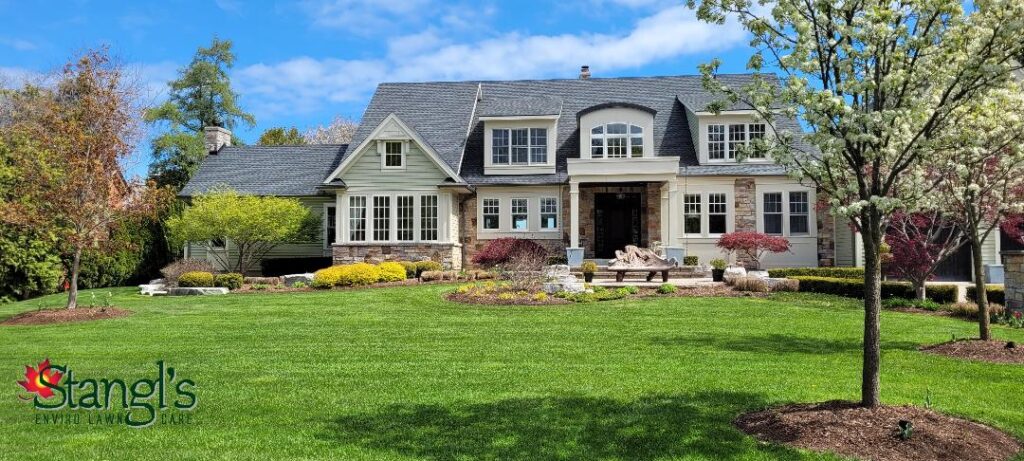After 43 years in the lawn care industry, I’ve seen it all. One of the most amusing and telling observations is how people often approach lawn care as a display of ego rather than an act of stewardship. It’s like the grand display of a peacock, all for show, with little regard for the underlying health of the soil or the environmental impact of their practices.
The Ego-Driven Lawn
Many homeowners treat their lawns as a status symbol. They meticulously maintain the grass, using fertilizers and sprays to ensure it looks pristine, especially in the most visible areas—the front lawn. It’s all about appearances. The green, lush grass is a reflection of their self-worth and success, a silent competition among neighbors to see who can achieve the most enviable lawn.
But what’s the cost of this perfect green carpet?
The Cost of Vanity
The obsession with a flawless lawn often leads to the heavy use of chemical fertilizers and pesticides. These products promise quick results, turning brown patches green almost overnight and eradicating weeds with a single spray. But these quick fixes come with hidden costs:
- Environmental Damage: The runoff from chemical treatments contaminates water supplies, harming aquatic ecosystems and reducing biodiversity.
- Soil Health: Over time, chemicals degrade soil structure, reducing its ability to retain water and nutrients. This leads to compacted, lifeless soil that can’t support healthy plant growth without constant chemical intervention.
- Health Risks: The residues of these chemicals can linger in the environment, posing risks to pets, children, and even adults who come into contact with treated lawns.
- Wildlife Harm: Beneficial insects, birds, and other wildlife are adversely affected by these treatments, disrupting local ecosystems.
The Peacock Effect
The emphasis on visual appeal over ecological health is what I call the “Peacock Effect.” Just like peacocks display their feathers to attract attention, homeowners often focus on the visible beauty of their lawn to project a certain image. Yet, beneath the surface, the soil is suffering. This shallow approach to lawn care is not just environmentally damaging; it’s also unsustainable in the long run.
A Shift in Perspective
After decades in this industry, I’ve learned that a truly beautiful lawn is one that’s healthy from the ground up. This means focusing on soil health, biodiversity, and sustainable practices. It’s not about the quick fix or the temporary appearance but about creating a resilient ecosystem that can thrive without constant chemical inputs.
Here’s how we can shift our perspective:
- Soil First: Prioritize soil health by improving its structure and organic content. Healthy soil supports strong, deep roots and robust plant growth.
- Reduce Chemicals: Minimize the use of fertilizers and pesticides. Opt for natural, organic alternatives that support soil and plant health without harmful side effects.
- Biodiversity: Encourage a variety of plants and beneficial insects in your lawn and garden. This not only enhances the beauty of your landscape but also promotes a healthy ecosystem.
- Education: Understand the long-term benefits of sustainable practices. It may take more time and patience, but the results are worth it—a beautiful, healthy lawn that’s good for you and the planet.
Understanding the Transition
It’s crucial to recognize that transitioning to a sustainable, healthy lawn is a process. Weeds are not the enemy but rather indicators of where your soil health currently stands. Plant diversity will ebb and flow as your lawn moves through stages of succession. During this transition, you might need to manually remove some weeds, but this is part of the journey towards a balanced ecosystem.
The conventional lawn care industry simplifies the process to sell products, often dangerous ones that harm the entire planet. The regenerative approach is holistic and natural, though sometimes other methods might be necessary during the transition. It’s important to move beyond what others might think of your lawn. The quick-fix “mor-on” approach of relying on fertilizers and sprays is not the answer.
The Hubris of Simplistic Solutions
It’s hubris to think that achieving a healthy lawn is as simple as applying fertilizers and sprays. The truth is, a truly healthy plant and soil ecosystem is complex and requires a sophisticated understanding of nature’s processes. People often assume they know everything, or that watching a video is enough to become an expert. I came from the fertilizer and spray industry myself, starting in 1981 and transitioning to regenerative practices in 2014. I’ve been there, done that, and I’m still learning.
Thinking you know more than nature is hubris. It’s about recognizing the depth of knowledge required to truly understand and nurture a healthy lawn.
Conclusion: Beyond the Peacock
Lawn care shouldn’t be about ego or a superficial display of beauty. It’s about nurturing a living ecosystem, respecting the natural processes, and making choices that benefit the environment in the long run. At Stangl’s Enviro Lawn Care, we believe in this regenerative holistic approach. Our methods focus on creating sustainable, healthy lawns that are more than just a pretty face.
If you’re ready to move beyond the peacock display and invest in the true health of your lawn, contact us at Stangl’s Enviro Lawn Care. Let’s work together to create a landscape that’s not only beautiful but also sustainable and resilient.
